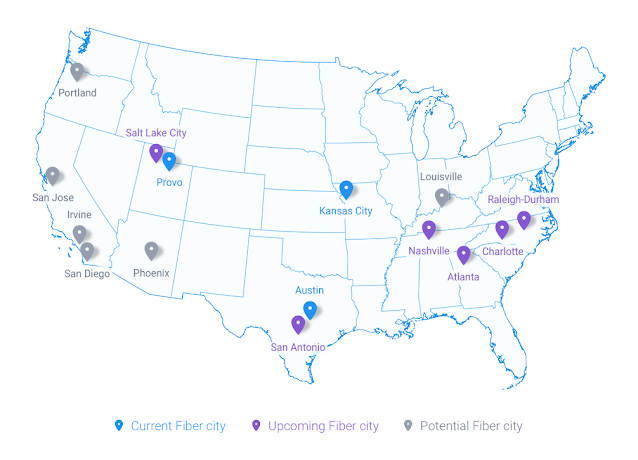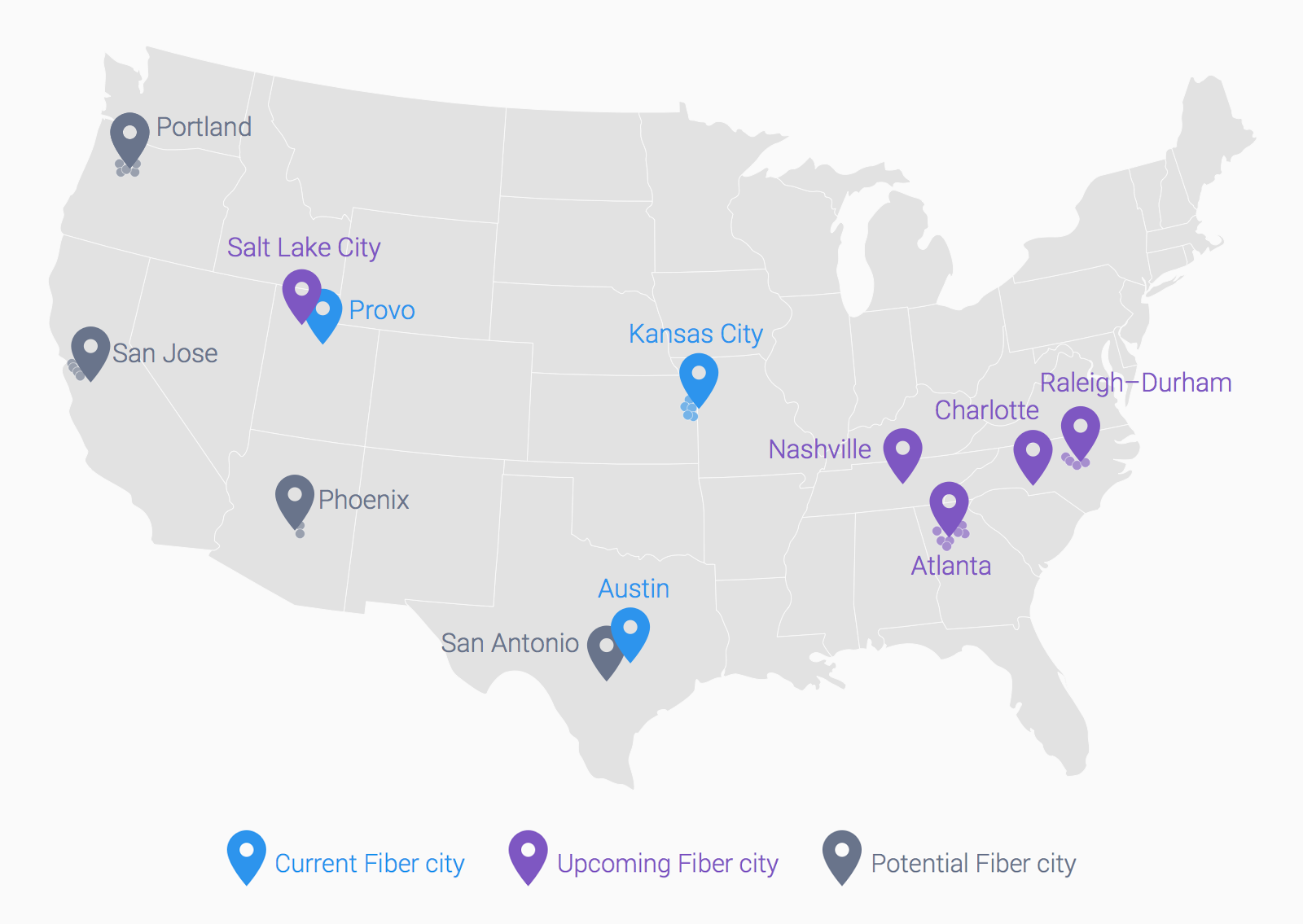Today, we’re inviting three more cities—Irvine, CA, Louisville, KY, and San Diego, CA—to work with us to explore bringing Google Fiber to their communities. Our next step is to begin a joint planning process with city leaders, just as we did when we began working with nine metro areas last year.
 |
| Irvine, Louisville and San Diego will join twelve metro areas where we're connecting users, designing and constructing new networks, or exploring the possibility of Google Fiber. |
We’ve seen that this planning process is helpful, both for Google Fiber and city officials—working together, we can take a massive infrastructure project and break it into manageable pieces.
Once we complete this planning process, we’ll determine if we can bring Google Fiber to Irvine, Louisville and San Diego. Every city is different and will move on a unique timeline, so we’ll keep in touch with residents about our progress along the way. And regardless of whether Google Fiber comes to the region, this process gives cities a head start in welcoming any gigabit provider to the area.
It’s clear that Irvine, Louisville and San Diego have strong leaders at city hall, who are passionate about bringing fiber to their communities and making the Internet more accessible for everyone. From Code Louisville to San Diego’s startup scene to Irvine’s collaborative workplaces, these cities are growing tech hubs with entrepreneurial cultures—great places to show us what’s possible with gigabit speeds. We’re looking forward to working together as we explore bringing Google Fiber to these communities.








